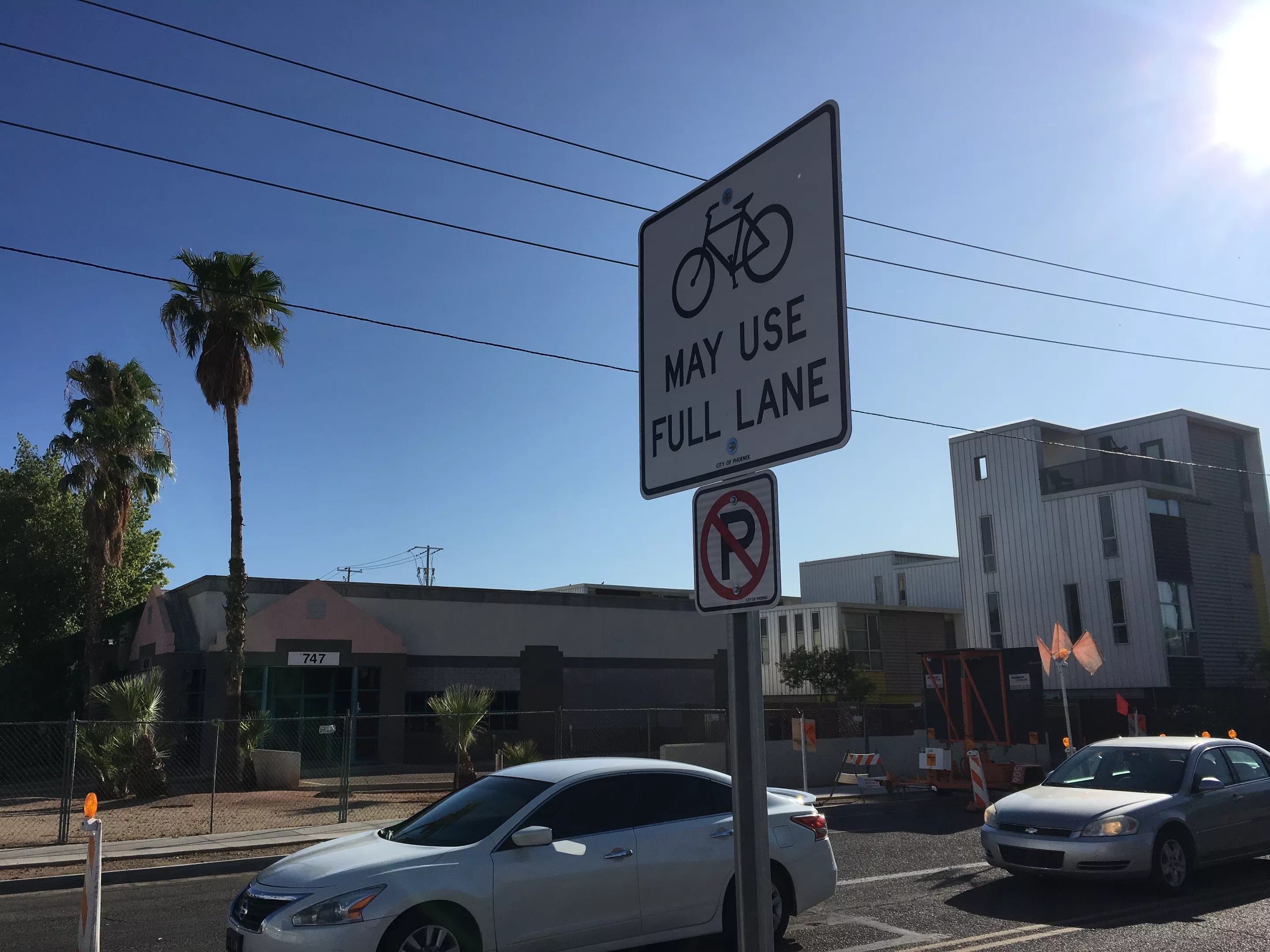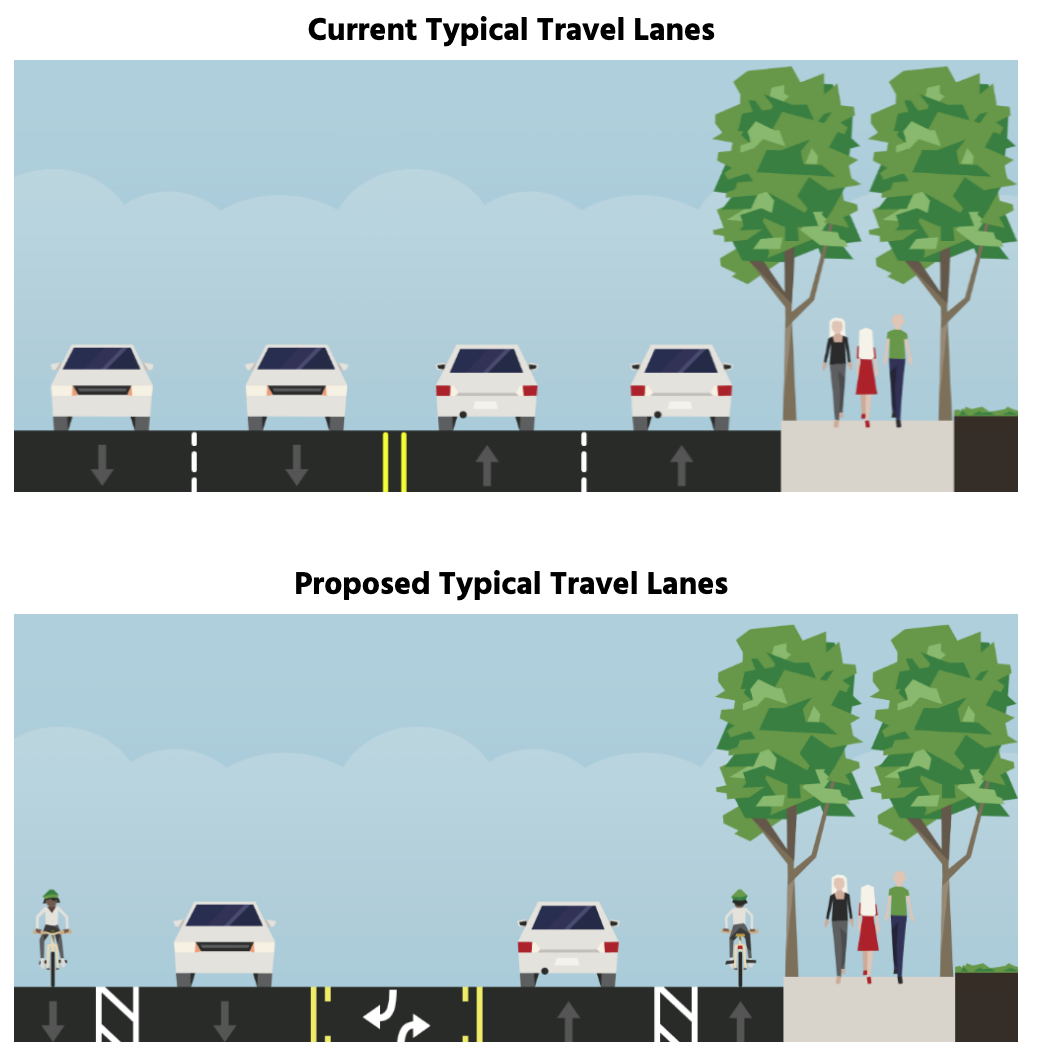
Steven Hsieh

Audio By Carbonatix
A city of Phoenix plan to add bike lanes along a stretch of North Central Avenue is meeting fierce opposition from neighborhood residents.
Transportation officials want to revamp the four-lane North Central Avenue between Bethany Home Road and the Arizona Canal into a three-lane road complete with bike lanes and a center turn lane. The bike lanes would be “buffered,” meaning that while there wouldn’t be a physical barrier protecting cyclists from vehicle traffic, a section of pavement several feet across would be marked to provide a clear visual divider between the bike and car lanes.
But at a virtual community meeting last week put on by city officials to gather feedback about the project, neighborhood residents slammed the project as unnecessary and ineffective. Some even claimed that it would be dangerous for kids in the neighborhood.
“This is a bad idea for our children. It may be great for the bikers but it will be horrible for our kids,” said Steve Shannon, who described himself as a general contractor and long-time local resident during the call. “We need to mobilize to fight this. I’ll contribute $10,000 today to start this.”
Funding for the project stems from Transportation 2050, the $16 billion transit infrastructure plan that Phoenix voters approved in 2015 through a sales tax hike. Part of the plan was to add over 1,000 miles of new bike lanes in Phoenix. As city officials are quick to point out, the current proposal to add buffered bike lanes along North Central Avenue aligns with that plan.

A graphic of the proposed lane changes on North Central Avenue
Screenshot via City of Phoenix
“Over the last decade or so, the Street Transportation Department has heard concerns about safety, speeding, and the lack of bicycle lanes on this segment of Central Avenue from various members of the community,” Ashley Patton, a spokesperson for the Street Transportation Department, wrote in an email. “Since the implementation of Transportation 2050, the accelerated pavement maintenance schedule has provided opportunities to look at upcoming paving projects for lane striping changes to improve safety and address community concerns.”
Many neighborhood residents argued at the meeting that it would redistribute vehicle traffic onto other nearby arterial or small residential roads.
“We are in opposition to the project. We disagree with the discussions on safety,” said Donald Kramer, who identified himself as the president of the Coulter Estates Homeowners Association. “Clearly, congestion is going to be increased.”
City officials indicated that wouldn’t be a significant problem, pointing to a traffic modeling study that showed that the average additional delay for vehicles moving through intersections along the corridor in question would increase by only a few seconds during both morning and afternoon peak commute hours.
Carl Langford, a traffic operations engineering supervisor with the Street Transportation Department, cited research showing that similar projects, also known as “road diets,” reduce collisions and crashes.
“Research basically shows that actually you can get a 42 percent reduction in collisions,” he said during the meeting. “Most of the time when we do these type of projects we see a reduction in traffic.”
One local resident, Ian Thrasher, complained during the meeting that the proposed bike lanes would inconvenience drivers trying to leave homes that are located just off of Central Avenue.
“We already have the pedestrians on the bridal path to contend with, now you’re going to put in a dedicated bicycle traffic lane,” he said. “So to get out of my house I already have to stop and make sure there are no pedestrians, then I have to pull a little more forward and stop and make sure there are no bicycles.”
While they were severely outnumbered during the meeting, several cyclists spoke in favor of the project. One woman cited an incident in which she was run off the road on Central Avenue by an aggressive motorist.
Dave Tapley, vice president of the nonprofit cycling advocacy group Phoenix Spokes People, told Phoenix New Times that while the proposed buffered bike lanes aren’t sufficient to protect cyclists, something is better than nothing.
“We support any change that increases the ease with which people can ride their bike on the streets and we’re generally supportive of the idea that bikes should have a place to go that isn’t the sidewalk,” he said. “When you get over 30 miles an hour, even a buffered bike lane can get a little scary. On any Phoenix street, a buffered lane is really the minimum.”
He added that the call was a “blood bath of neighbors saying that it would be absolutely disastrous” and that he wouldn’t be surprised if city officials axed the proposed bike lanes due to the backlash from neighborhood residents.
“The city comes forward and says, ‘we want to provide safe streets and make everyone comfortable.’ And then as soon as you have a meeting the NIMBYs come out and say, ‘you’ve got to have four lanes at 50 miles an hour’,” Tapley said. “I’ve seen projects get canned when you get this kind of NIMBYism.”
So far, city officials are keeping a lid on what their final plan for the project will be. Patton said that the public will learn about the city’s decision by “fall 2021” at the latest.
In the meantime, they’re encouraging members of the public to take an online survey about the proposed lane changes. The survey will be open until 11:59 p.m. on June 11.